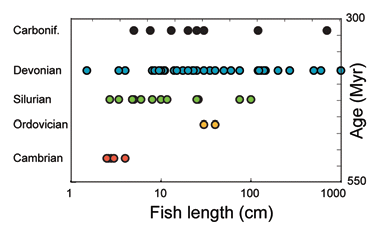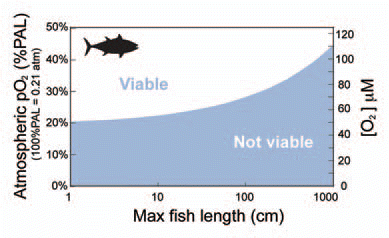Figures & data
Figure 1 The length of 84 fish species found in each of the Paleozoic periods from the Cambrian through the Carboniferous. In this compilation the Carboniferous stage is clearly under-sampled, while the older periods are better represented in this study.

Figure 2 Model fish size maxima are shown as a function of ambient oxygen pressure for tuna shaped fish (See appendix in Sup. Material for details). The active metabolic rate in the model fish determines its high oxygen demand, which is so high that larger gill area is unable to accommodate the required supply. Therefore, there is a limit to how big predatory fish can grow in a low oxygen environment.
